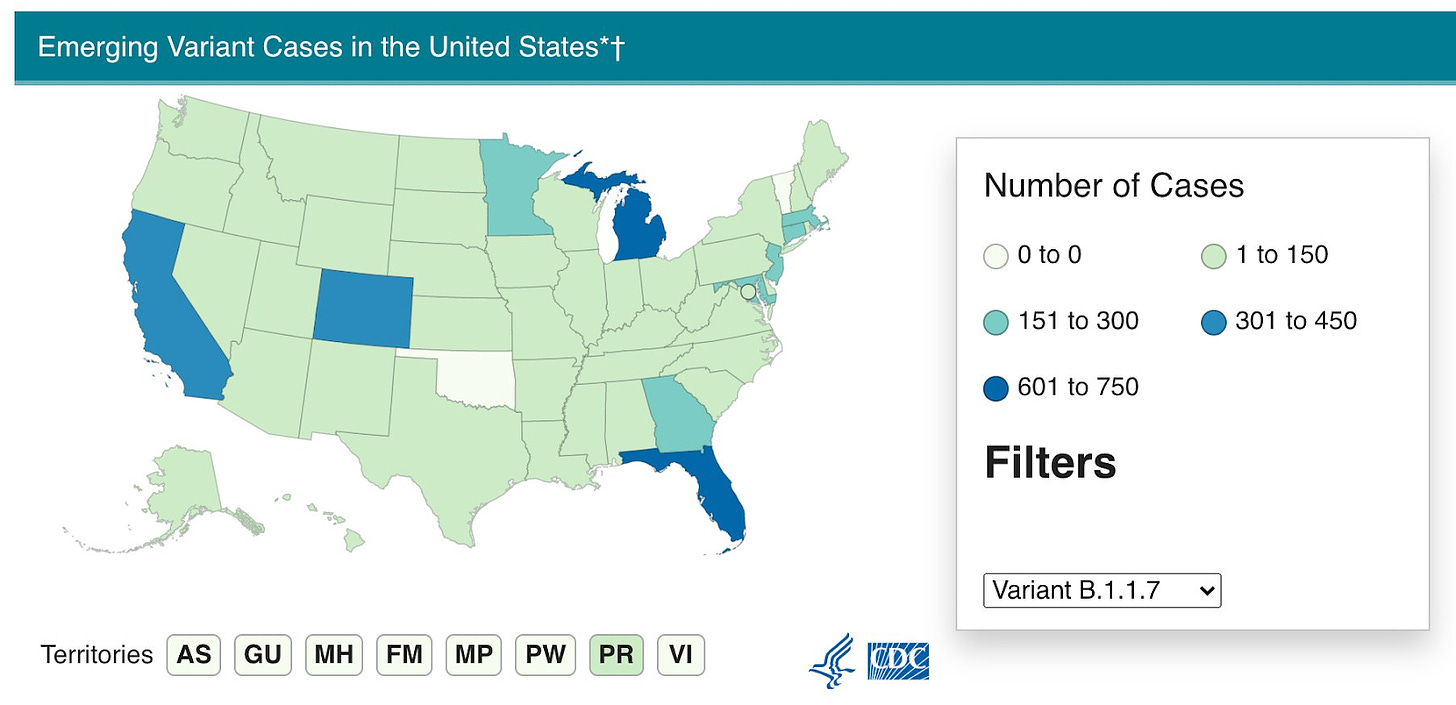Italy’s back in lockdown. That should be our wake up call.
Italy was America’s canary in the COVID-19 coal mine. Their lockdown—and increasing cases in 12 states—should force governors to reconsider fully re-opening.
One year ago today, Dr. Marco Pavesi, an anesthesiologist in Milan, Italy, published an op/ed in the New York Times where he reported his country’s experience with what was then being called the “novel coronavirus:”
Lombardy, the region most affected, has 16,220 cases, with 1,640 dead, 879 in intensive care — 56 more than the day before — and 2,485 clinically cured. With these numbers, the country’s health care system may soon collapse.
That was published on March 18th, 2020. Today, exactly one year to the date later, Italy is back in lockdown. If they’re any indication, the end of the COVID-19 pandemic might not be as soon as we hope.
We would do well to heed the warnings.
Italy was the COVID-19 canary in the coal mine.
Italy heralded what was to come for the US. Only weeks after Dr. Pavesi’s ope/ed, doctors in cities all over America were facing what he had described: hospital beds overflowing with patients—who would leave in body bags just days, or even hours, later.
Italy bore the brunt of Europe’s COVID-19 pandemic, suffering 102,000 deaths to date. In the US, we’ve suffered worse. That is, in part, because we failed to heed the warnings coming out of Italy—and the rest of the world.
We wore our American exceptionalism like blinders, assuming that our money and power would protect us. And yet, our “exceptionalism” in public health meant that masks, lockdowns, testing, and contact tracing were underfunded or undermined here in America.
We’ve lost over half a million Americans—millions more have lost their livelihoods. Why? We failed to heed the warnings.
And it’s happening yet again.
Italy is locking down while America opens up.
On Monday, Italian Prime Minister Mario Draghi announced another round of lockdowns warning of a “new wave of contagion” as the COVID-19 B.1.1.7 variant rampages across his country. Cases were up 34% over the past two weeks.
“I am aware that today’s measures will have an impact on children’s education, on the economy but also on the psychological state of us all, but they are necessary to avoid a worsening that will make inevitable even more stringent measures,” Draghi said as schools were shuttered and stay-at-home orders were put in place across large swathes of the country.
The combination of the variant and laggard vaccine deployment has left transmission increasing across other countries in Europe as well, including Hungary, Germany, and France.
Meanwhile, around the US, governors are opening America back up. Texas Governor Greg Abott was the first to open up. Here’s what he had to say:
With the medical advancements of vaccines and antibody therapeutic drugs, Texas now has the tools to protect Texans from the virus...Make no mistake, COVID-19 has not disappeared, but it is clear from the recoveries, vaccinations, reduced hospitalizations, and safe practices that Texans are using that state mandates are no longer needed. Today's announcement does not abandon safe practices that Texans have mastered over the past year.
Except that’s exactly what it does. The GOP Attorney General of Texas is, in fact, suing the city of Austin as they attempt to maintain mask protocols. Other governors and local officials have followed suit all over the country. L.A. County, a hot spot during the winter surge, opened gyms and indoor dining earlier this week.
COVID-19 cases plummeted for 6 straight weeks between January 9th and February 21st, but the drop in cases has stagnated considerably since. This stagnation is largely the result of new variants, including the B.1.1.7 variant wreaking havoc in Italy.
A recent study showed that B.1.1.7 is up to 61% more deadly than the common strain. What’s worse: that strain is rapidly spreading. In fact, another study found that the B.1.1.7 variant is doubling every 10 days or so.
This was Prof. Michael Osterholm, who directs the Center for Infectious Disease Research and Policy at the University of Minnesota, on NBC’s Meet the Press two weeks ago:
“Four weeks ago, the B.1.1.7 variant made up about 1% to 4% of the virus that we were seeing in communities across the country. Today it’s up to 30% to 40%.”
Comparing the situation to the “eye of the hurricane,” he said, “What we’ve seen in Europe, when we hit that 50% mark, you see cases surge. So right now, we do have to keep America as safe as we can from this virus by not letting up on any of the public health measures we’ve taken.”
His warnings are worth heeding. In Michigan, one of the states with the highest number of B.1.1.7 cases, COVID-19 transmission has increased over the past two weeks—rising back up to mid-January levels. Indeed, Michigan is just one of 12 states that have seen COVID-19 cases climb.

We still haven’t vaccinated enough people to prevent another surge.
As local officials like Abbott ease prevention protocols, they’ve made the argument that vaccines are on the way. That’s just it though—they’re still just on the way. To be sure, the Biden-Harris Administration has done yeoman’s work to increase vaccine deployment—administering a high of 4.5 million vaccinations in one day over the weekend.
Yet under 12% of Americans have had a full course of vaccinations, and only about 22% have had any dose at all. Though our vaccination rates are nearly four-fold Italy’s, they’re still far too low to achieve the kind of herd immunity that would allow us to give up on basic public health measures.
People are taking their cues from government officials and, with spring break on hand, people are partying like the pandemic is behind us. It’s not. If Italy’s experience is any indicator, we’re not out of this yet.
I remain confident that if we continue to deploy the vaccine—and people continue to take it—the worst is likely behind us. And yet, we cannot be hasty. We still need masks. We still need to limit particularly risky activities like indoor dining, bars, and clubs. And we still need to be vigilant. The vaccines are here—but so are the variants. We would do well to heed the warnings.





